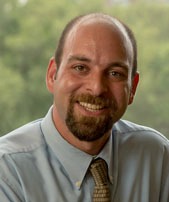NAGC works to support those who enhance the growth and development of gifted and talented children through education, advocacy, community building, and research

Not unlike Scrooge and his visit by four ghosts one Christmas Eve long ago, I too was in the company of spirits over my recent break from the classroom. Their visions of the past, present, and future of the field of gifted education came alive for me in one night.
As part of new initiatives by NAGC, I found myself accessing and reading many of the NAGC webpages. I was quite familiar with some of them, but there were others I had not visited in quite some time. As the metaphorical chains clanked in the background, I knew I was in for a long evening.
First, I was propelled through history while reading over the History of Gifted Education timeline, and witnessed the beginning of the field itself. There was too much to recall but a few bits and pieces remain.
It was around the turn of the twentieth century and new educational thought had brought about questions of intelligence, ways to measure it, and once identified, how to nurture what was there. I walked past halls where hard-working Francis Galton pondered heredity and Lewis Terman sought to develop an intelligence test. I sat in the back of a wondrous classroom at Leta Hollingworth’s Speyer School, where students thrived. I was whisked away to a packed auditorium as J. P. Guilford addressed the APA convention, challenging an examination of intelligence. I even saw NAGC founder, Anne Issacs, type away the first issue of the association’s newsletter in 1950. Nothing prepared me for the explosive 1957 launch of Sputnik by the Soviet Union, which in turn resulted in a flood of activity relating to a reexamination of the United State’s investment in its human capital. I flew by as large amounts of money were invested into the identification of gifted and talented students. The National Defense Education Act passed, The Marland Report issued, and in 1974, the Office of the Gifted and Talented was conceived. The United States cared about education and sought to do all it could. You can retrace my steps by visiting the History of Gifted Education webpage. It is worth a read.
Next, I was back at my desk as soon as I had left, and feeling as one often does on a long drive. Just then my computer went dead and the power went out, as often does during a Northeast winter.
A light kindled in my mind though, and I found myself being led through the most recent times in gifted education. I witnessed the evolution of an educational field where research, creativity, collaboration, and discussion highlighted the importance of recognizing talent in our nation’s children, in any field. I beheld the change in perspective of what it means to be gifted, the branching out of conceptions, definitions, and a change in identification methods to include a multi criteria and a non-verbal approach. There were so many individuals involved, and a substantial amount of understanding and resources came from their efforts. I actually observed the signing of the Jacob Javits Gifted and Talented Students Education Act and the creation of the National Research Center!
Something soon began to happen though and I felt an uneasiness. Even as considerable research was completed, stressing the need for a differentiated curriculum, I saw the general educational community follow a more traditional testing approach. As a result, budget cuts, the emergence of myths, overwhelming misunderstandings, and the end of the Javits Act and the National Research Center prevailed, even in the face of several reports highlighting our nation’s inability to meet the needs of our most able students.
I did see some improvements for gifted students, the eventual re-instatement of the Javits Act and Research Center, and even the inclusion of language about gifted education included in the reauthorization of Elementary and Secondary Education Act (ESEA). As I returned to my desk once again with visions of the most recent State of the Nation in Gifted Education report, illustrating the patchwork quilt of programs, services, and resources for high-ability students across the nation, it was clear that there are still many challenges ahead. You can read about NAGC’s present advocacy efforts here.
Finally, I emerged once more from deep thought and expected to be visited once again. The power kicked on and I sat looking at an empty computer screen. I began to type the following, which will serve as the ghost of gifted future. Instead of what WILL be, let us all look to what MAY be.
The twenty-first century represents a new era where educational possibilities are limitless and the future for gifted and talented children, hopefully, will once again become be a national priority. In order to educate and develop talent in all areas, the educational field should focus on enriching individuals with all that gifted and talented education pedagogy has to offer. Our nation’s schools are failing our gifted and talented children, identified or not. With all of the problems plaguing the nations’ educational system, I suggest that gifted education strategies, whether deliberately delivered or inherently presented, could provide a new framework for education as a whole, for everyone!
For information regarding Definitions of Giftedness, visit NAGC’s What is Giftedness? or access Redefining Giftedness for a New Century, a position paper from NAGC.